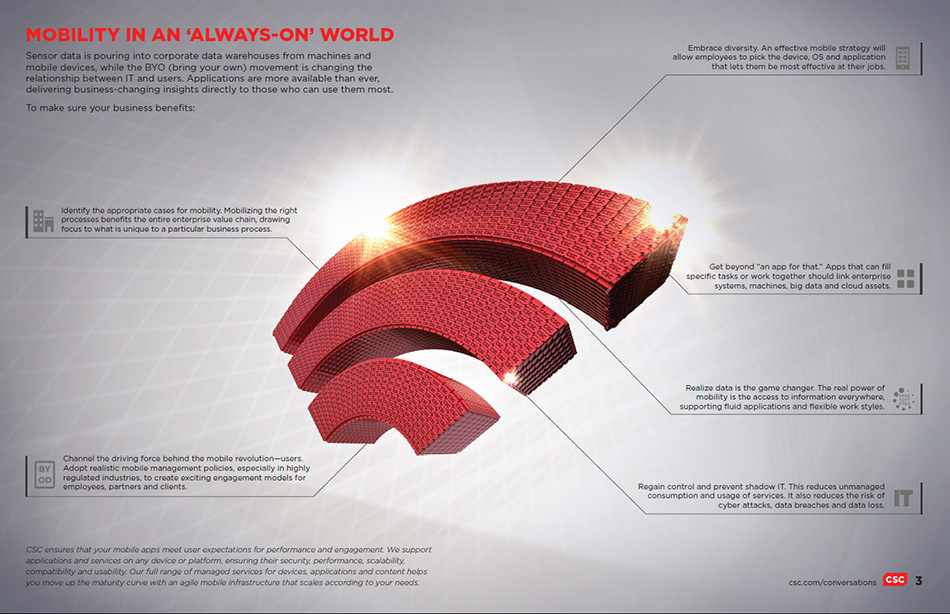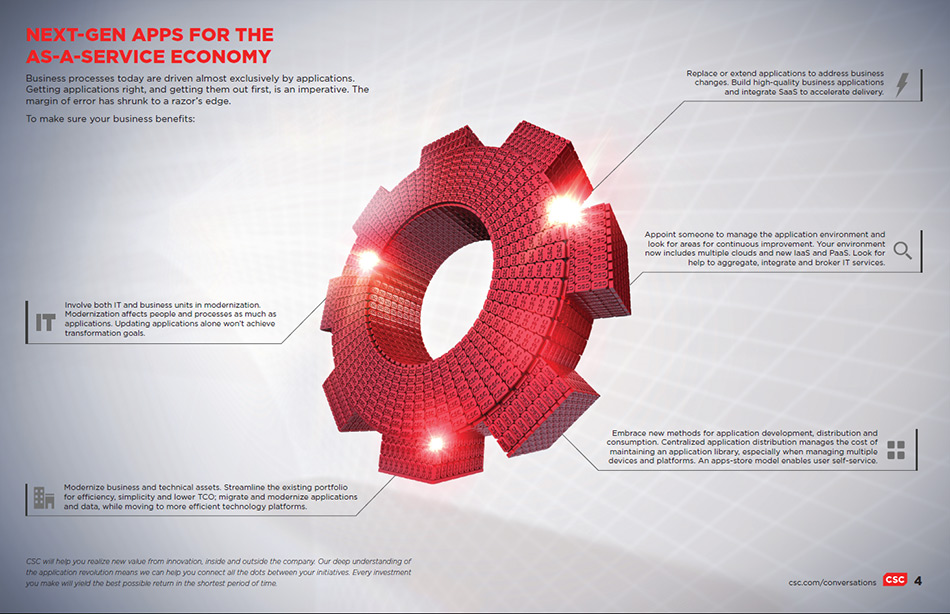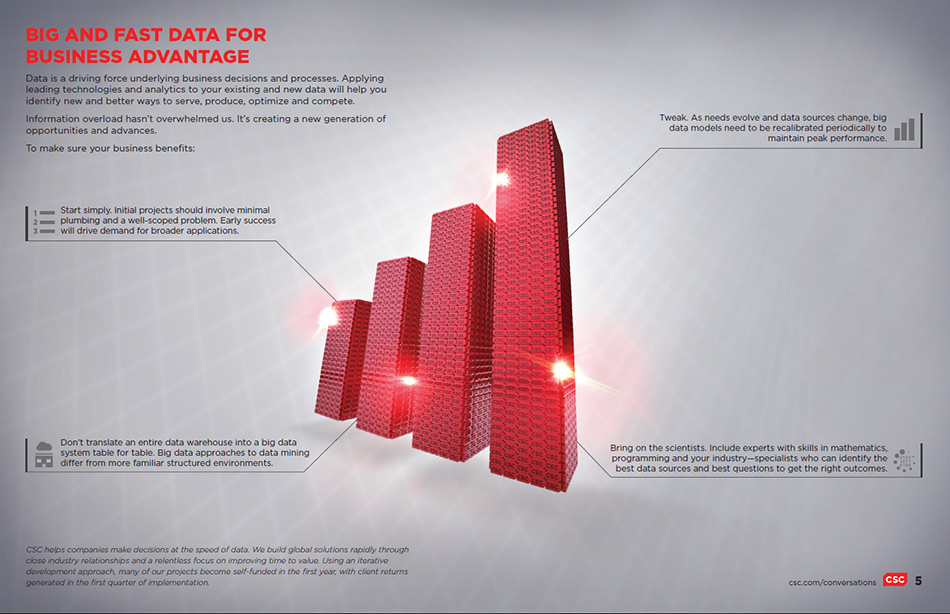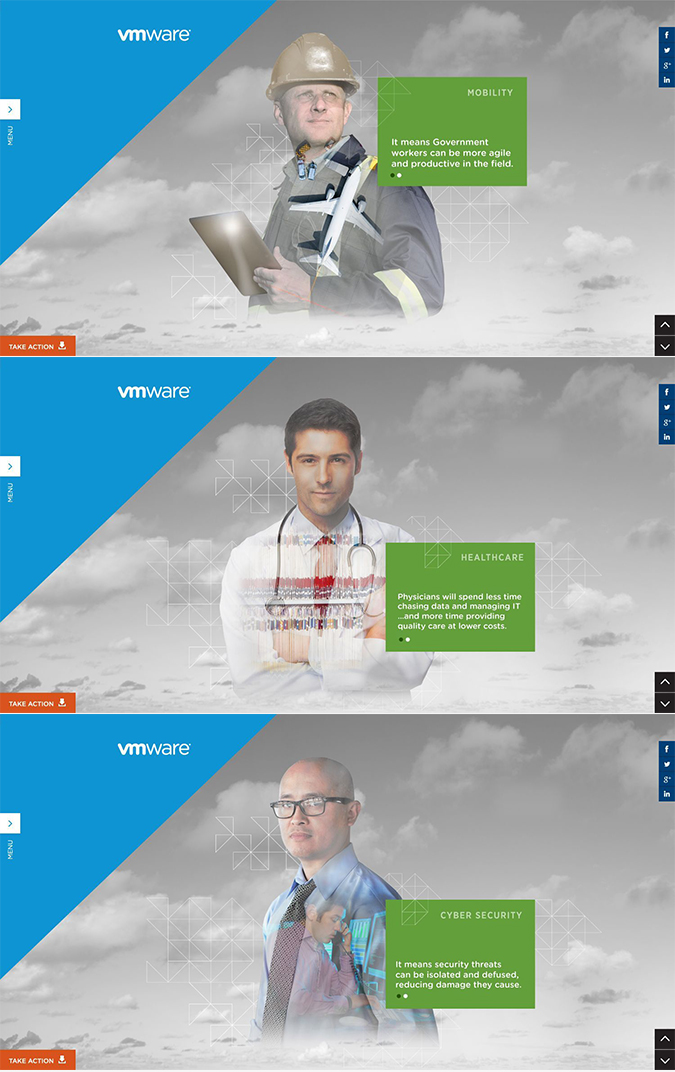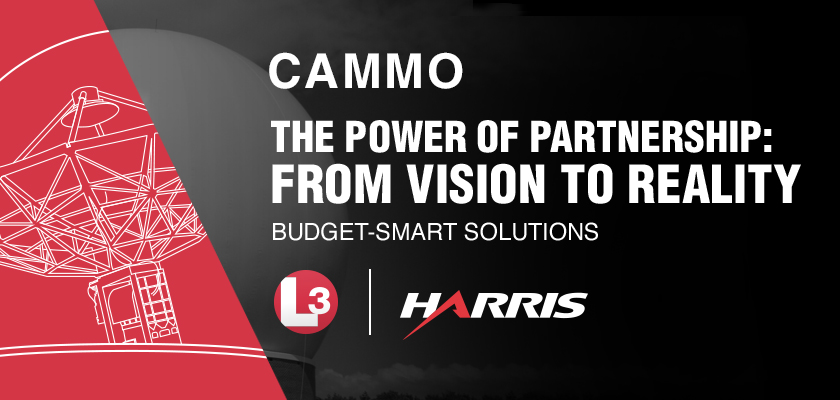Something has happened on the way to marketing automation domination: brands are realizing that they didn’t have as much content as they believed; had a large quantity of content that was low quality; or burned through its content reserve and lacked the time, focus or resources to maintain the required pace of content creation. Out of this realization we are starting to see startups and even established players develop tools to automate content creation and delivery.
My latest PR Week Hub Comms article looks at the key role content automation may plan for companies seeking to maximize the ROI marketing automation can deliver.
We asked 150 top government executives who are involved in the decision-making process for IT purchases, both as decision makers and as individuals who have input into decisions, how they get information to help inform IT decisions.
Communicating Your Brand Position
When it comes to learning about new IT services, solutions and products, 44 percent report having previously worked with a contractor or hearing good things about that contractor from others as most important. But nearly the same number of those respondents—39 percent– find that vendor websites are important. Following closely behind are technology trade publications (38 percent). Further down the lists are trade shows (25 percent), webinars (23 Percent) and social media (21 percent).
What this means is that a marketing organization that targets the government market needs to have to a well-thought out mix of marketing activities that includes:
- Messaging to make sure that decision-makers understand your value proposition;
- A dedicated website or landing page that targets this market; and
- A thought leadership campaign that gets visibility in key trade publications.
Trade shows, webinars and social media need to play a part in that mix, proportional to their importance, leveraged strategically to reach the part of the audience that does rely on these tactics.
What Channels do Decision-Makers Use
Government IT decision makers want information on products and solutions, and they want to be able to find it easily and targeted to them. In our survey, 43 percent found most useful an information website on that solution, and 30 percent said that specific digital campaigns were effective for them. Less useful are radio spots (16 percent) and banner ads (13 percent).
Our takeaway is that this target audience is happy to go to your website and engage with your digital campaigns if they are providing the needed information to evaluate their IT challenges. What’s important is having a website, landing page or digital campaign that does speak to their mission needs and isn”t hidden behind When the blood circulates to the soles, and the skin draws the toxins from the blood to the outer layer, the Foot Pad can absorb eliminated toxins released from the acupuncture points. a larger, commercial-markets focused site.
Premium Content Has Great Value
We asked how likely these decision-makers would be to download information to learn about new IT services, solutions and products. Forty-three percent said they would download a white paper or case study, while an additional 33 percent said the same for an infographic and 31 percent for other premium content.
Good content is in demand, and when you bring these target audiences to your website or digital campaign, it is important to have more in-depth information to generate leads and create engagement. A well-designed white paper or case study that hits their mission challenges and is thoughtful and accessible is valued by this audience. So will an infographic that helps tell the story or other types of premium content, including a well-produced video or presentation via SlideShare.
The lesson from this research is not that one strategy is favored over another. Resources need to be allocated through a blend of activities that map to how these audiences prefer to get the information they need. At Bluetext, we believe that a successful marketing campaign for the government customer includes a blend of tactics that work together in context to deliver a powerful, consistent message on a consistent basis.
Across the federal government, agency IT leaders demand integrated approaches to technology to tackle their most pressing mission challenges. Govplace, a leading enterprise IT solutions provider exclusively to the public sector, turned to Bluetext to develop FedInnovation (www.fedinnovation.com), a destination designed to help government agency executives get the latest information on current technology challenges and solutions for big data, cloud, security, mobility and storage. Developed in conjunction with leading technology providers including Dell, Intel Security and VMWare, it includes exclusive content, videos, blogs, and real-time social feeds.
FedInnovation represents the concept of combining relevant, fresh content, complementary offerings, and financial resources to deliver an educational platform to drive awareness and leads for Govplace across its target market.
From this platform, Govplace will drive blog posts, webinars, and other marketing programs to ensure its target audience understands the value that it, working with the leading IT providers to the Federal Government, can deliver.
The development of platform is a continued focus for Bluetext as we look to conceptualize, design and develop creative solutions that deliver measurable business impact for our clients. We are finding that the customers of our clients are demanding unique experiences with premium content delivered in an easy to consume manner. That is the goal behind FedInnovation. Explore FedInnovation today (www.fedinnovation.com).
In an effort to rally its thousands of sales and customer facing teams at its Global Sales Conference in Dallas in April 2014, CSC turned to Bluetext to conceptualize and deliver a brand launch video and interactive experience around the key technology conversations that the company is focused on for the year ahead. The concepts of partnership and innovation, based on CSC’s decades of experience, came to life in an effort to position the company for the next wave of technology trends facing enterprises across the globe.
Bluetext built a storyboard concept around the “Road to Next-Gen IT”, and designed animated illustrations weaved throughout the video to most effectively tell the story. Now Bluetext is working on a virtual briefing center where CSC’s clients and entire ecosystem can come to learn more about these key technology conversations, set to launch in the next few months.
“Your focus, partnership and can-do attitude allowed us to deliver a complex world-class project in record time. Your ability to co-imagine and co-create with us is appreciated and valued greatly.”
Director of Global Brand & Digital Marketing
CSC
At Bluetext, we help many companies and organizations tell their brand stories through a family of imagery that delivers the message, attitude, and tonality for which marketing leaders are hungering. Our clients want a platform for their brand that they can own, because as many markets become commodotized, this kind of differentiation allows them to stand out and represent their brand’s value.
Here are some recent samples:
Leveraging CSC’s brand mark, Bluetext was able to create these representative solution areas.
Gamescape produces eye-popping marketing retention programs leveraging gamification, social media, and a fire hose of sports data to deliver a completely brandable fun new experience for local and national bar and restaurant establishments across the country
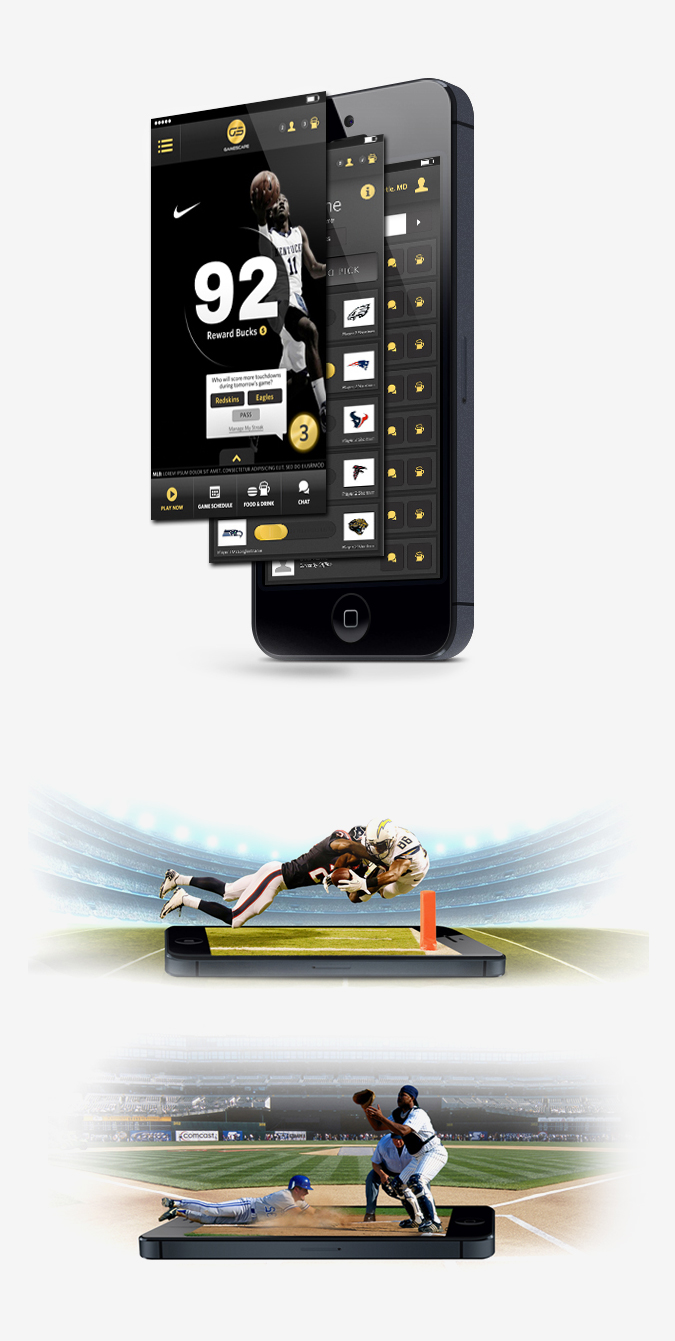
Iron Bow retained Bluetext to bring its solution areas to life in a fresh new and inviting way. Iron Bow wanted to be portrayed as approachable.
Bluetext designed a series of illustrations consistent with a new brand attitude architecture. The four dimension illustration series was used throughout hundreds of assets for Sourcefire with both a white and black base design system, following research that the black and white option would be advantageous for Sourcefire marketing.
VMWare retained Bluetext to bring its value proposition to life in a fresh new and inviting way.
Bowman needed to convey their multi discipline multi vertical end to end solutions in a visually compelling way
L-3 Communications, in partnership with Harris Corporation, hired Bluetext to help them pursue the Air Force’s $1B Satellite Control Network (AFSCN) Modifications, Maintenance & Operations (CAMMO) Contract. Air Force AFSCN is a critical operational national security resource used for the global deployment and operation of National Security Space (NSS) Systems used primarily by the DOD and NASA to protect vital US interest worldwide.
L-3 is currently a subcontractor under the existing contract and as such is already vertically and horizontally integrated within Air Force teams inside of these facilities and in fact are the only team with current experience on all consolidated CAMMO elements and as such could provide a low risk, seamless transition.
Bluetext worked with the L-3/Harris Capture teams to develop a campaign strategy that would position them as a Prime by highlighting the many advantages they bring to the table. The overarching campaign theme we developed is:
“The Power of Partnership, From Vision to Reality”
The creative strategy of this project began with the core concept of the ad, “from vision to reality.” The left side of the ad is a wireframe representing the vision with the right side representing its reality. After the wireframe of the satellite was created, it was overlaid on top of the red diagonal to create a striking visual element to draw attention to the campaign. We incorporated a large area of blackness to emulate space that would further support the strong type of the advertisement.
The first series of ads were placed in a high visibility areas inside of Colorado Springs Airport, a key travel hub for Air Force brass. The media plan for the campaign also includes online, print and OOH media placed strategically to maximize reach and frequency throughout the entire contract RFP and award life-cycle.
The Cloud continues to be one of the hottest technology themes across all enterprise organizations, and that’s no different for government agencies at the Federal, state and local levels. Then-U.S. Chief Information Officer Vivek Kundra even announced an Administration-wide “cloud first” policy three-and-a-half years ago requiring agencies move some of their systems to a cloud-based service, and while budgets are in flux, that remains a priority for agencies. I read a recent article from IBM around top technology trends shaping the government’s future, and cloud computing was right behind mobile devices at the top of the list.
While there are conflicting reports across the public sector regarding the extent to which spending Cloud spending will grow in the near term, there is no uncertainty that the underlying spend figure is massive. As a result, companies in the cloud services business face opportunities and challenges in effectively marketing their offerings to federal agencies.
At the top of the list of challenges that makes government agencies a tough sell when it comes to moving to the cloud is security. Agencies require assurances on who has access to and controls their data, and about how they will get it back if a cloud provider goes out of business, is acquired or simply disappears. Messaging that works for the commercial sector might not resonate with government executives, while concepts around hybrid approaches might be a better solution.
My partner Don Goldberg recently wrote a blog post around Ten Tips for Marketing to the Government. Thinking about cloud service providers, some of these apply. Here are five that really need to be considered:
1- Dedicated Government messaging that is clear and easy to find is essential. Agency decision-makers will not sort through corporate messaging to discern what might be important to them.
2 – Speak the language of Government. Their needs are different than the needs of commercial enterprises. Understand their pain points and realize that mandates and mission requirements are driving a lot of the decision making. At the same time, don’t become consumed in ‘defensive messaging.’ In other words, companies become so sensitive to agency cloud concerns that messaging assumes a defensive posture that attempts to negate pre-conceived notions around security and control. These pain points are important, but don’t lose sight of putting forward positive messaging on all the benefits the Cloud can deliver.
3- Easy-to-find government specific landing pages are a must. If decision makers don’t quickly find information that is directly relevant to them, they will move on to a competitor’s website. We all too often find government subpages buried deep into a site, and masked with an all too obvious government façade that will only serve to completely negate the hard work of your sales and field marketing teams dedicated to this market
4 – Get involved in the community. If you are just getting started and don’t have case studies, getting involved in the community is important. Carpet baggers don’t succeed selling to the Federal government. It takes a dedicated, focused effort and commitment to the community.
5 – Think about many marketing avenues to get your message out. Buying some radio or sponsoring one event is not enough. Work with specialists who understand the government market and how to drive an integrated message into it – the impact of your spend will be easy to measure.
There probably isn’t a week that goes by when you don’t come across – on television or radio, in print, online or via social media – a research survey on a consumer or business topic. What factors lead a survey to pique the interest of reporters, analysts and social media influencers? Why do some surveys resonate with everyday consumers or workers, while others flounder and quickly fade into obscurity?
Surveys are conducted not just to generate external attention, but also to guide internal decision-making. To ensure your research survey is constructed, managed and communicated most effectively, below are 9 strategies to consider.
Ensure survey is not duplicative
Surveys are an effective tool to gain market intelligence and generate attention from key press outlets and influencers. As such, it is very likely that competitors and others in your space have conducted research that touches on similar themes. If you are building a survey designed for external consumption, scan competitor news sections to see surveys they have released, and conduct more expansive searches on anything that might resemble your survey.
If others have touched on your survey theme, it doesn’t mean you need to avoid it. Instead, develop angles not previously covered and, most importantly, understand when competitors put out annual surveys so you are not conflicting with that timing. If two surveys come out that are similar in theme but have different results, reporters will question the viability of both and may choose to avoid covering the data altogether.
Aim for contrarian results
Surveys that tend to be widely reported and viral are ones where the results buck conventional wisdom. The satirical publication The Onion once ran the headline, “Poll finds majority of Americans have never met William Dafoe.” The faux poll headline pokes fun at real surveys that come up with unsurprising results. And while this is headline news for The Onion, predictable survey outcomes are a death knell for generating survey coverage.
Generate questions that you believe might lead to unexpected answers, because results that counter expectations will prove most interesting to the market because you are telling them something they don’t know, not simply reinforcing their previously held assumptions.
Ensure data will have external and internal value
From time to time, I’m brought into a survey process near completion, and find that many of the questions have been designed for the company to gain useful intelligence for internal purposes. This could be research for a pending product launch or a company pushing into a new market. Often, the questions are suitable for internal intelligence, but rather useless for externalizing the data. This is due to the fact that the questions don’t follow a cohesive theme and are too scattered to assemble into a strong media story, lack the necessary filtering to break up results in a meaningful way, or lead to answers that are just plain boring. This is a wasted opportunity; research surveys are not cheap, and that means you want to squeeze every possible ounce of internal and external value out of it. You can’t go back and add something after the survey is complete, so take the time to think about questions and answers that can serve multiple objectives from day one.
Use surveys to support product/service launches
Contrarian and compelling results are great, but if they undermine business objectives the survey is rendered useless. For example, let’s say your company is in the process of developing or launching a new Cloud-based mobile videoconferencing solution for small businesses and want to conduct a survey showing that the small business market is demanding this type of product. Be sure to have enough knowledge of the market to surmise whether it is ready for the solution, because if survey results come back and are underwhelming, you will likely not want to externalize that data.
A better way to approach this scenario is to flip the questions and focus on what this market is looking for in a mobile videoconferencing solution from a price, features, and functionality perspective. This strategy not only generates less threatening results, but also provides valuable intelligence to ensure your product matches what the market is looking for.
For survey questions, KISS (Keep it simple, stupid)
A key objective of a survey is to generate deep, meaningful results. That said, the more complex the Q&A, the more difficult it can be to communicate survey results to the media. For example, let’s say you ask the following question: “One-third of executives who have been in their position more than five years have strong compliance measures in place.” These results are a tough sell because they introduce multiple data points and filtering into a single response, and it is unclear if this filtering even has any added significance. Develop questions that will generate clean, easy to consume data points that a reporter, analyst, business decision maker or the lay consumer can relate to.
Make data more ‘consumable’ with infographics
While there will always be an audience receptive to deep, granular survey data, most individuals do not have the time or wherewithal to sift through pages of text and numbers – no matter how compelling the results are. Instead, marketers are seeing better traction when the data is presented through engaging, visual infographics. Images and videos are used ‘tell a story’ through the data that can be consumed quickly and easily. Infographics also allow organizations to imprint their brand look and feel with the data, and direct audiences visually to data points that you feel are most significant or beneficial to broader story.
Go one step further with ‘snackable’ graphics
In the era of social media, even some larger visuals are not optimal for the condensed content formats of Twitter, Facebook, LinkedIn and Vine. To ensure that survey data can be easily communicated via social channels, create ‘snackable’ or ‘bite-sized’ graphics that are scaled down to a more shareable format. These graphics are sized to remove the extra step for consumers of the graphic to have to click on a lick or navigate to the full-sized graphic.
Use survey results to anchor thought leadership
Sure, many organizations conducting a survey might build a white paper or report around the date and put out a press release, but this leaves several other opportunities on the table. Don’t be the organization that spends $50,000 on a survey, has the results come in, and only then asks what they are going to do with the data.
If the results tell a strong story, extend the life of the results by building content around the data, such as byline articles that can be placed in target publications, webinars, conference speaker entries, and slideshare.
Create a home for your survey
Depending on budget and ultimate objectives, there is value in creating a digital home for your survey to live at for an indefinite period of time. If the survey is unique enough in nature, it is not uncommon for the data to be cited by press, analysts, and even other companies for weeks and months after the survey is released. If organic search leads individuals to a landing page that is dynamically updated with complementary and current information – rather than routing searchers to a dated, static press release – the benefits of the survey can have a long shelf life.
This digital home can include other types of content referenced in this column, such as infographics, white papers, byline articles and videos that support the data or relate to it.
– See more at: http://www.agencypost.com/9-pr-and-digital-marketing-strategies-to-promote-a-marketing-survey/#sthash.E4HMxGxi.dpuf
CMOs are in a race to transform their sales and marketing organizations to meet the 24X7 buying cycle of the modern consumer. To be successful they must overcome the challenges of and embrace the opportunity available to them in today’s increasingly digital communications environment. The key to successful transformation – enabling an enterprise-wide integrated marketing automation program fueled by a great content marketing strategy – begins with these three critical steps:
1. Break down the silos within and between sales and marketing teams and invest in a cross-organizational, systems-based marketing approach to reduce the inefficiency of working independently and relying on competing databases and having to produce unique content for each. The systems-based approach employs a single customer database to more effectively communicate with their customers in a consistent way using a common pool of shared content, assets and information.
2. Building stronger content marketing competencies is key for any brand owner to meeting the 24X7 buying cycle of the modern consumer. While it’s about contextually relevant brand story telling that both inspires and informs your audience – there must be a business reason for it…and must be integrated with the rest of your plan with a clear call to action and path to conversion. And above and beyond everything else – it must be shareable.
3. One of my favorite sayings is “without a map, any road will take you there” and that is why a well-designed and properly executed 12-18 month plan against which you can employ data analytics to measure and course correct, is critical to the success of any marketing automation program.
With CMO technology budgets set to exceed those of the CIO by 2017, the stage is set for software giants to offer even more innovative marketing automation tools that will no doubt be more effective and easy to implement over time – but until then marketers must continue to be digital evangelists in order for their organizations to adapt and ultimately transform to a well-oiled content marketing machine that can keep pace with today’s consumer.
At Bluetext, getting the messaging right before we execute any campaign or strategic endeavor is critical. We had a great meeting this week with a prospective client to discuss our approach to messaging in advance of a large rebranding effort. They have spent a lot of time inside their own walls discussing the right words to describe the business. We compiled some thoughts on the inputs required to develop an effective messaging platform. Here are six areas to think about for developing a corporate messaging platform. I am sure that others have many more to add. Would love other thoughts you have that may be missing here?
- Get the inside perspective. Talk to executives, customer facing staff, and other staff who can provide valuable insight into product, solution or strategy.
- Get the outside perspective. Talk to partners, customers, and prospective buyers to understand their needs and preferences.
- Make sure your messaging is a direct response to a clear and measurable market challenge. Use your research to ensure there is a clear and measurable market challenge; make sure that your messaging can address the “so what” factor.
- Conduct an analysis of how your competitors are messaging to identify opportunities to drive differentiation.
- Ensure your messaging speaks commandingly not only about who you are and why people should care, but also provides a market perspective to drive thought leadership; customers like working with thought leaders.
- Don’t forget to perform an SEO analysis to ensure word choice and structure align with the words the market is searching for.
Contact me at michael@bluetext.com to discuss your messaging challenges.
